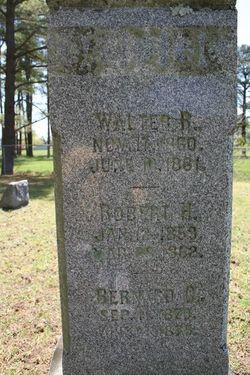On a government installation near my office sits a graveyard that dates back to the mid 1800s. I play on a
 softball field adjacent to the cemetary and checked it out just last week before a game. It's fenced off and so you can't walk amongst the headstones and grave markers but from the fence you can read a few of the inscriptions.
softball field adjacent to the cemetary and checked it out just last week before a game. It's fenced off and so you can't walk amongst the headstones and grave markers but from the fence you can read a few of the inscriptions.
On one of those markers, the names of 3 children are engraved, their ages listed as 1, 3 and 5 years old respectively, incompletely telling a tragic and heartbreaking story of young lives lost and the lives of those left behind to bury them.
This morning I came across this related piece by tiberjudy that reminded me of that pre-softball game visit to the old cemetary and the connections to the past we're missing out on today:
Back in the days when cemeteries were grand and beautiful, the living and the dead were much more connected than they are in our modern world. People were born at home and many babies died very young also at home. Families lived together with several generations under the same roof. If you were sick or injured you were treated at home where you’d either recover or die, surrounded by your family. When you died, your body wasn’t whisked away to a funeral home. Your body was washed and dressed by family members and your wake and funeral was held, most likely, in the room where you died. Many families had burial plots on their own land. If not, the parish church always had a cemetery, usually adjacent to the church. You’d see it every time you went to Mass. You’d grow up helping to keep your family plot tended and you’d surely visit your family’s graves on birthdays and anniversaries. You knew where your kin were buried and they were still, in some ways, part of your family life. You visited them and took them flowers. As you helped pull the weeds from their graves you’d hear stories about the deceased person and these would keep their memory alive. Today’s sterile, drive-through “gardens” are rarely near the parish church. The staff there mow the grassy expanse so there’s no need for family upkeep. Without monuments or statues it’s often difficult to locate a loved one’s grave. Great for mowing but bad for encouraging family visits and reflection. Many modern cemeteries don’t allow flowers to be left on the gravesite. Dying in a sterile hospital and buried in an easy-mow plot, our dead are pretty removed from our daily lives.
Catholics believe in something called the “communion of saints.” That means we believe that those who have died in God’s friendship are part of the same mystical Body of Christ as those of us alive on earth. If your church proclaims the Apostle’s Creed, then you believe this, too. Thus the faithful departed remain alive in Christ, just as we are. In short, we’re all in this together. Our modern culture has gone a long way towards severing any connection between the living and the dead. We hide the process of dying and we bury our dead in endless rows of unadorned identical plots. Gone are the beautiful statues of weeping angels or praying cherubs. There are no more poetic epitaphs remembering the life and loves of the deceased person. When was the last time you made a family visit to put flowers on your grandmother’s grave? Do your children even know where your grandmother is buried?
Practically speaking, few families today could afford a lavish family tomb in one of the few grand old cemeteries that still survive. It’s even unusual to find a parish church that still has its own cemetery. And with families living all around the country, it’s hard to make frequent visits to family plots. But we can do a few things to recapture that sense of communion with our deceased family members. We can include them in our family prayers at mealtime and at bedtime. We can remember the anniversary of their death with a memorial Mass or donation to the parish in their name. We can share photographs and stories about them with our children and grandchildren. We could plant a special garden in their honor and include their favorite flowers or shrubs. The important thing is for us to teach our family that our faith in Christ makes us all members of His family and that dying doesn’t separate us from one another. Our faith connects us to one another through the love, mercy, and sacrifice of Jesus. Nothing, not even death, can separate us from His love.
“Our dead are among the invisible, not among the absent.”
—Blessed Pope John XXIII
Beautiful piece. And yet another reason I find my embrace of the Catholic Church so rewarding.
Tiberjudy by the way deserves to be a regular stop on your blogospheric rounds.
